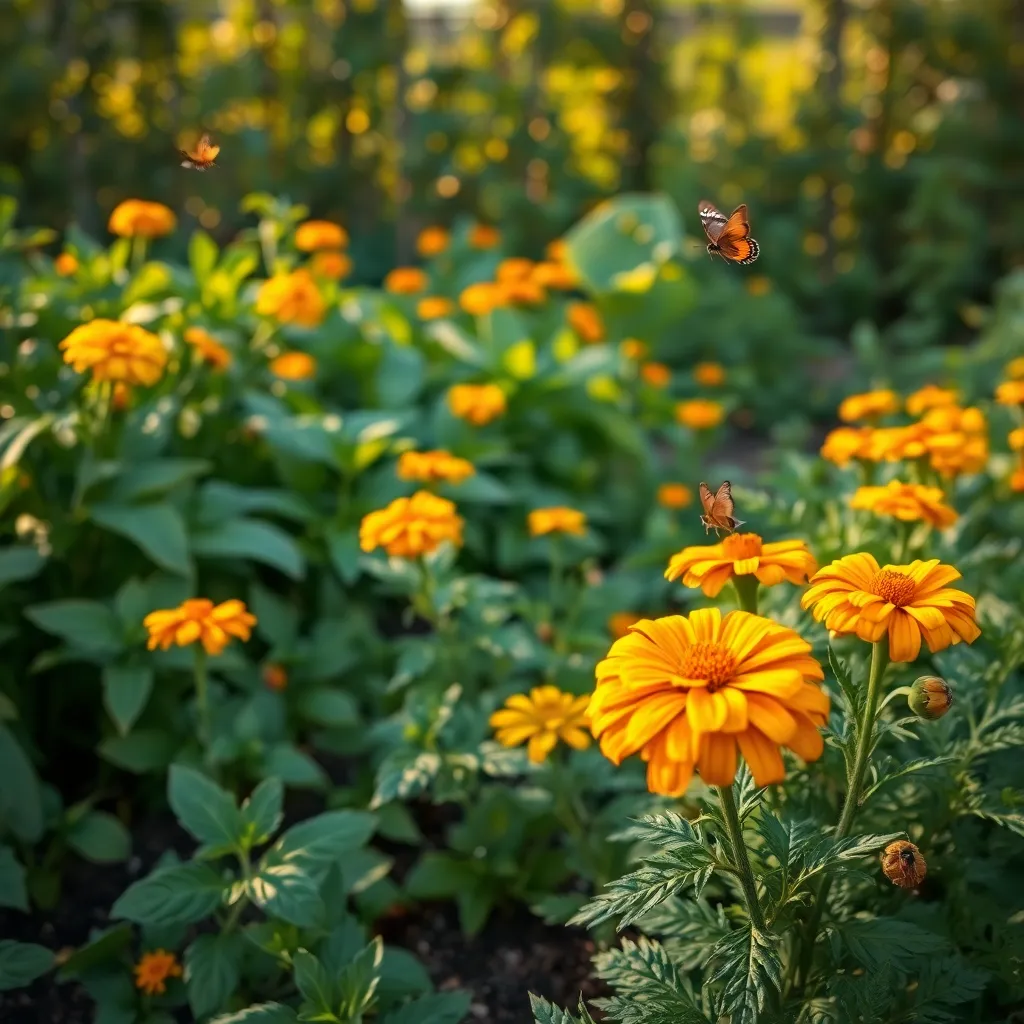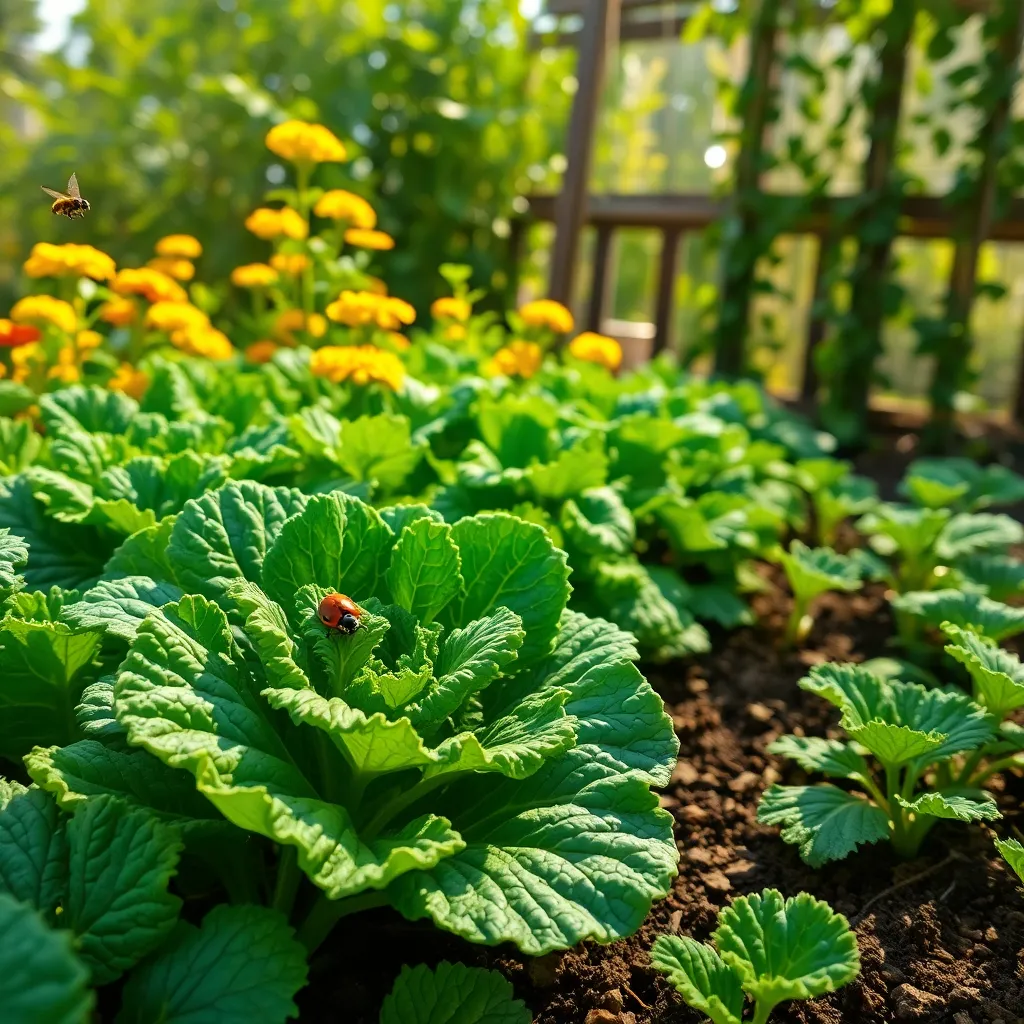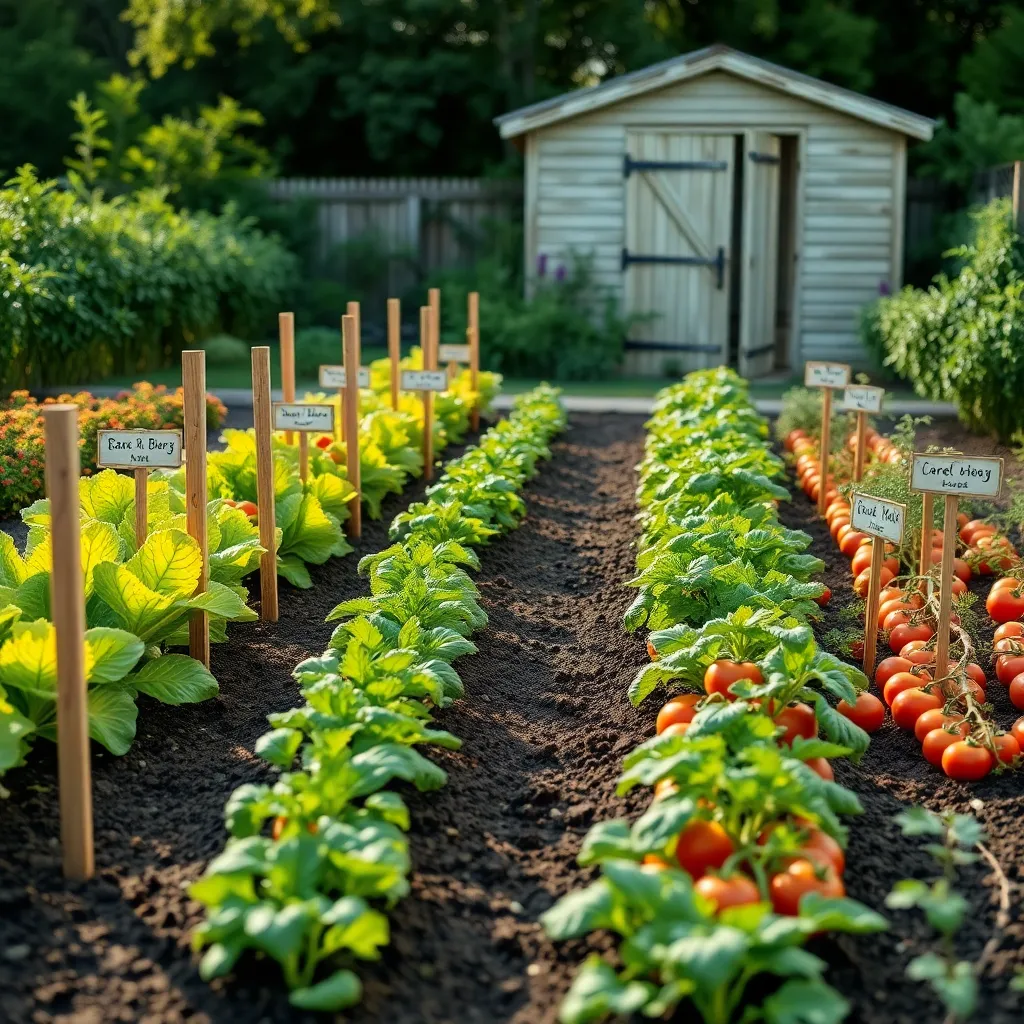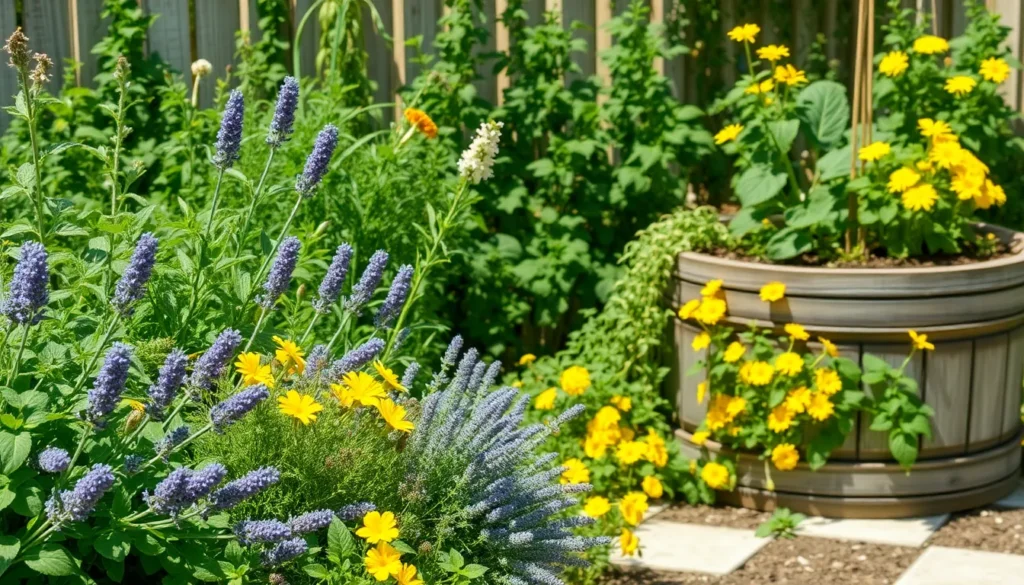Gardening is a journey that blends art and science, inviting both novices and seasoned green thumbs to nurture life from the soil. As any gardener knows, however, the beauty of a flourishing garden can sometimes be overshadowed by uninvited guests—pests that threaten to nibble away at your hard work. Embracing eco-friendly pest control methods not only protects your plants but also preserves the delicate balance of your garden’s ecosystem. This approach is crucial for maintaining a healthy environment and ensuring that your outdoor sanctuary thrives without harmful chemicals.
In this article, we’ll explore seven stunning eco-friendly solutions that can help you manage pests while enhancing the beauty and health of your garden. Whether you’re just starting your gardening adventure or have been cultivating your green space for years, these methods offer practical and sustainable alternatives to traditional pest control. From natural predators to clever plant pairings, you’ll discover strategies that are as kind to the earth as they are effective. Prepare to be inspired by the elegance and efficiency of these techniques, which promise to elevate your gardening experience to new heights.
By the end of this read, you’ll be equipped with the knowledge to implement these beautiful, eco-conscious solutions in your own garden. You’ll gain insights into the benefits of biodiversity, learn how to attract beneficial insects, and understand the art of companion planting. The journey toward a greener, more sustainable garden is a rewarding one, and we’re here to guide you every step of the way. Let’s delve into the world of eco-friendly pest control and transform your garden into a haven for plants, pollinators, and people alike.
Understanding Eco-Friendly Pest Solutions

Eco-friendly pest solutions are a sustainable way to manage garden pests without harming the environment. These methods focus on using natural and non-toxic approaches to maintain plant health and productivity.
To begin with, regular monitoring of your garden is essential. By inspecting your plants frequently, you can catch pest issues early before they become severe.
Companion planting is a valuable strategy where certain plants are grown together to deter pests. For example, planting marigolds with tomatoes can help repel nematodes, enhancing plant health.
Another effective method is introducing beneficial insects, such as ladybugs and lacewings, which prey on common pests like aphids. These insects can be attracted by planting dill, yarrow, or fennel, which serve as excellent habitats.
For a more direct approach, homemade pest sprays using ingredients like neem oil or garlic can be applied to plants. Mix a few drops of neem oil with water and a small amount of soap to create a natural insecticide that is safe for edible plants.
Mulching can also play a crucial role in pest control by providing a barrier that deters certain ground-dwelling insects. Use organic mulches like straw or wood chips to enhance soil quality while keeping pests at bay.
Companion Planting for Natural Defense

Companion planting is a time-tested strategy that utilizes the natural relationships between plants to ward off pests. By strategically placing certain plants together, you can create a more resilient garden that requires fewer interventions.
For instance, planting marigolds alongside vegetables like tomatoes can deter nematodes and aphids. These bright flowers not only add color to your garden but also emit a scent that pests find repulsive, making them a perfect natural defense.
Another effective combination is growing basil near your tomato plants. Basil not only enhances the flavor of tomatoes but also helps repel flies and mosquitoes, creating a healthier environment for your veggies to thrive.
It’s essential to consider soil conditions and moisture levels when planning your companion planting layout. Most companion plants, like marigolds and basil, thrive in well-drained soil with moderate watering, ensuring they grow vigorously without competing for resources with your main crops.
Attracting Beneficial Insects Naturally

Creating a garden that attracts beneficial insects is a fantastic natural pest control strategy. These insects, like ladybugs and lacewings, help manage pest populations by preying on harmful bugs such as aphids and caterpillars.
To draw these helpful creatures, consider planting a variety of flowering plants that bloom at different times. This provides a continuous source of pollen and nectar, which is essential for their survival and reproduction.
Incorporating plants like marigolds, yarrow, and dill can enhance your garden’s appeal to beneficial insects. These plants not only add beauty but also serve as a food source for adult beneficial insects, thus encouraging them to stay and thrive in your garden.
For those looking to delve deeper, consider maintaining a small patch of bare soil. This simple addition can provide nesting sites for ground-dwelling insects such as solitary bees, which are excellent pollinators.
Homemade Organic Sprays and Mixes

Creating homemade organic sprays and mixes is a powerful way to manage pests while maintaining an eco-friendly garden. These solutions can be made using common household items, offering a cost-effective and sustainable approach to pest control.
To start, consider making a simple soap spray, which is effective against soft-bodied insects like aphids. Mix one tablespoon of mild liquid soap with one quart of water, and apply it directly to the insects for best results.
Another excellent option is a garlic spray, known for its ability to deter a variety of pests. Blend two cloves of garlic with one quart of water, strain the mixture, and then spray it onto affected plants to keep pests at bay.
For a more advanced mix, try a neem oil spray, which is both biodegradable and non-toxic to humans and animals. Combine one teaspoon of neem oil with one quart of water and a few drops of dish soap, and apply it to plants every 7-14 days for ongoing protection.
It’s crucial to test any new spray on a small area of the plant first, to ensure it doesn’t cause damage. Pay attention to the plant’s response, and adjust the concentration if necessary to avoid harming your plants.
Incorporate these organic sprays into your routine to naturally protect your garden while promoting a healthy, balanced ecosystem. With regular use, you’ll find these homemade solutions can effectively manage pests without relying on harsh chemicals.
Utilizing Natural Predators Effectively

Introducing natural predators to your garden can be an effective way to manage pest populations without resorting to chemicals. Ladybugs, for example, are voracious eaters of aphids and can be purchased from garden centers or online suppliers.
When releasing ladybugs, it’s best to do so in the evening or early morning when temperatures are cooler. This ensures they stay in your garden rather than flying away immediately—moistening the plants beforehand can also help them settle in.
Besides ladybugs, consider introducing parasitic wasps to control caterpillars and other garden pests. These wasps lay eggs on or in the pests, and their larvae consume the host, naturally reducing pest numbers.
Creating a welcoming environment for beneficial insects is crucial for their success. Planting a variety of flowers like marigolds, dill, and fennel can provide nectar and pollen, attracting and sustaining these helpful allies.
Creating Barrier Methods with Mulch

Mulch serves as an effective barrier to keep pests at bay while enhancing soil health. By spreading a thick layer of organic mulch, such as straw or wood chips, you can deter pests from reaching your plants by physically blocking their path.
Organic mulch not only acts as a barrier but also improves soil conditions. As it breaks down, it enriches the soil with nutrients, promoting healthier plant growth and making your garden less hospitable to pests.
To maximize the effectiveness of mulch as a pest deterrent, apply a layer that is at least two to three inches thick. This depth is crucial as it helps to prevent sunlight from reaching weed seeds, further reducing competition for your plants.
For an added layer of protection, consider using mulch types that naturally repel pests, such as cedar or cypress. These mulches release natural oils that can deter insects, providing an eco-friendly pest control method for your garden.
Implementing Crop Rotation Strategies

Crop rotation is a time-tested method that helps manage soil fertility and control pests. By altering the types of crops grown in a particular area each season, you can disrupt pest life cycles and reduce reliance on chemical pesticides.
Start by categorizing your plants into families, such as legumes, brassicas, and nightshades, and rotate them annually. This practice not only prevents the buildup of pests and diseases but also improves soil structure and fertility, as different plants have varying nutrient requirements.
For beginners, a simple three-year rotation plan can be effective. Plant heavy feeders like tomatoes and peppers in the first year, follow with legumes like beans in the second year to enrich the soil with nitrogen, and finish with root crops like carrots in the third year.
Advanced gardeners can fine-tune their rotation strategies by considering companion planting and soil amendments. For instance, adding organic matter like compost can enhance soil health, making it more resilient to pests.
Conclusion: Growing Success with These Plants
In navigating the intricate tapestry of relationships, our “7 Beautiful Eco-Friendly Pest Control” article has unveiled a series of nurturing concepts to enhance your bond while being mindful of the environment. We explored the importance of open communication, the power of empathy, the value of shared goals, the art of appreciation, setting healthy boundaries, the joy of shared experiences, and the strength of forgiveness—all through an eco-conscious lens. These principles not only foster a healthier relationship but also contribute to a more sustainable world.
As an actionable step, we encourage you to choose one principle that resonates most with your current relationship dynamics and commit to integrating it into your daily interactions. Whether it’s deepening your communication or finding new shared experiences, taking this step can lead to profound growth.
Remember, nurturing a relationship is an ongoing journey. Save or bookmark this article as your guide through the ups and downs, ensuring these valuable insights are always within reach. With dedication, you can cultivate a flourishing relationship that stands the test of time, paving the way for a fulfilling future together. Your efforts today sow the seeds for tomorrow’s success—start nurturing them now.







